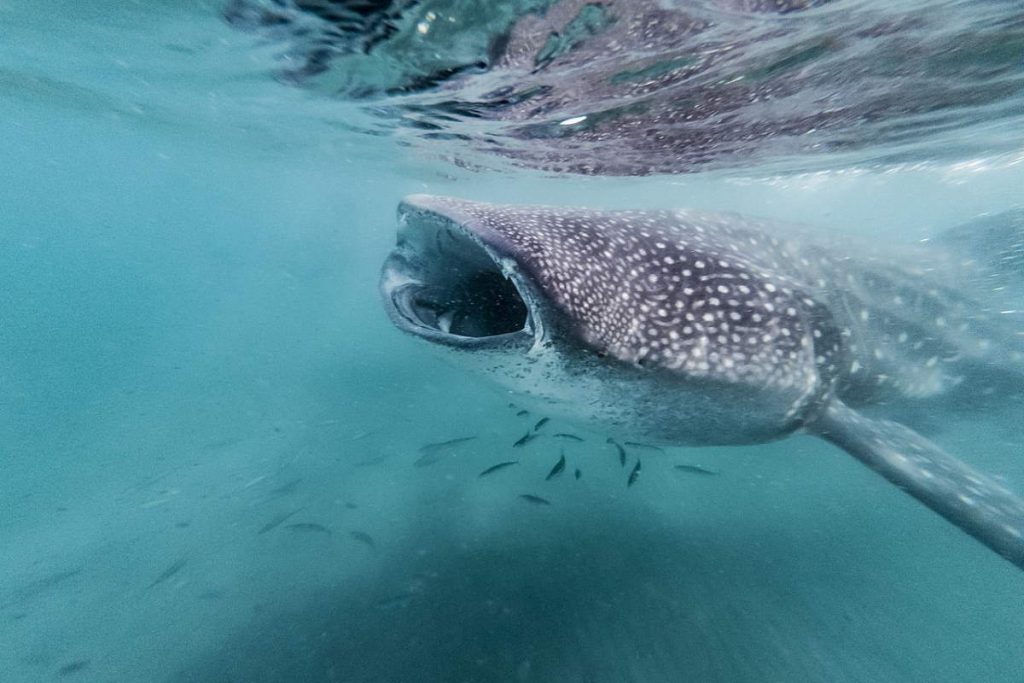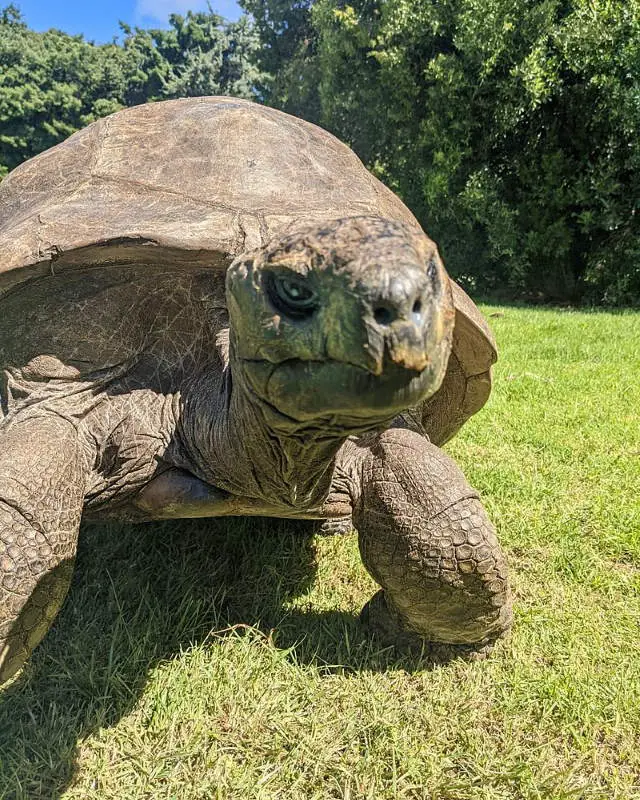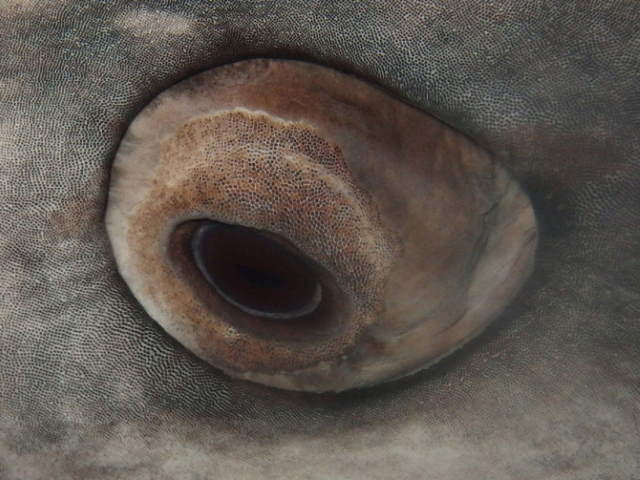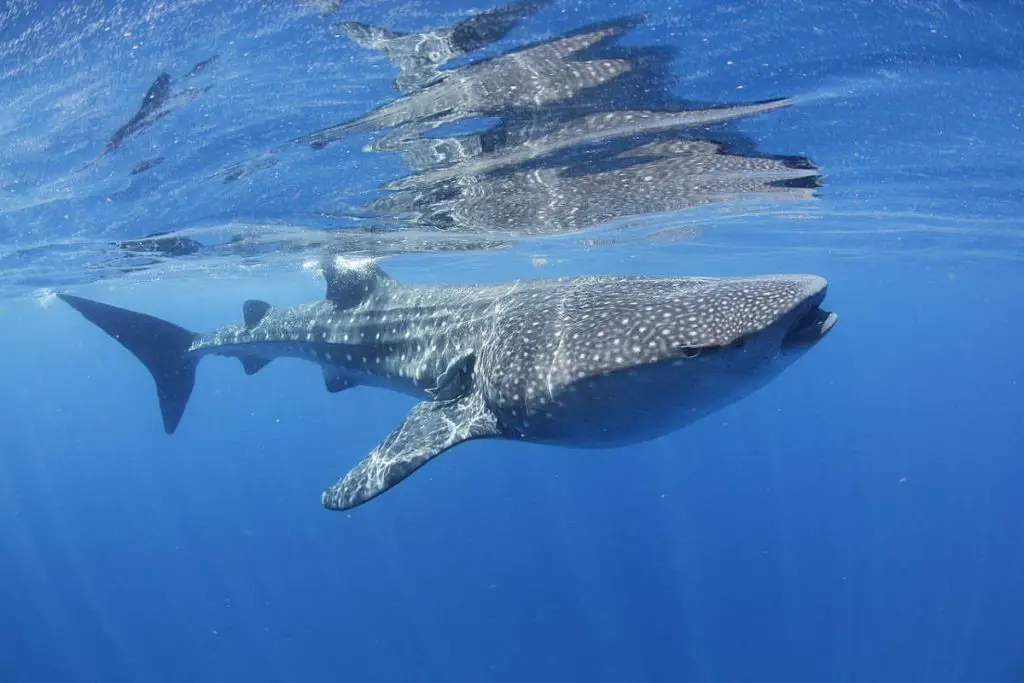The whale shark (scientific name: Rhincodon typus) is the largest member of the shark family and also the largest fish in the Earth’s oceans, can reach up to 18+ meters (60+ feet) in length, but this species is harmless to humans. Here are 10 amazing whale shark facts.
Whale shark facts
1. Whale Sharks are the biggest fish in the world
Extremely slow-moving whale sharks can be able to grow up to 12 meters (40 feet) long on average. The largest confirmed individual had a length of 18.8 meters (61.7 feet).
2. The Whale Shark is not a Whale, it is a Fish!
Although the word whale is mentioned in their name, they are not related to whales in any way.
They are named so because they are the largest fish – and they also filter feed, which takes us to the next whale shark fact:
3. Whale Sharks are Filter Feeders
They are filter feeders, like baleen whales – which means they feed themselves by straining suspended matter and food particles (plankton, other small marine animals, and small fish) from water, typically by filtering the water over a specialized structure.
A whale shark’s mouth is about 5 feet (1,5 m) wide which allows the animal to swallow a lot of plankton. They have over 300 rows of tiny teeth and 20 filter pads which they use to filter feed.
They consume tons of food from the water every day to meet their high energy needs.
Their mouth is at the very front of their head (different from most sharks who have their mouth on the underside of the head).

4. They can live up to 130 years
Whale sharks have an estimated lifespan of 70 to 100 years.
But they can live even longer. According to a study recently published in Marine and Freshwater Research, whale sharks can live up to 130 years.

Related: Longest-Living Animals in the World
5. They live in the warm, temperate seas
They can be found in tropical waters around the world. Although very rare, they have been seen in cold waters such as the coast of New York.
But, most whale sharks are found in the Indian Ocean and around hundreds in the Pacific. 25% of their population is also found in the Atlantic Ocean.
6. The offspring stay inside their mothers until they are ready to hatch
The whale shark is ovoviviparous, meaning they have the embryos develop inside eggs that remain in the mother’s body until they are ready to hatch.
Mothers can carry about 300 embryos at a time – with each at a different stage of development. Pups are between 16 and 24 inches (40-60 cm) long at birth.
7. They are slow swimmers
These gigantic creatures are slow and leisurely swimmers. They travel at only about 5 kilometers per hour (3 mph).
8. They have tiny teeth around their eyes!
Researchers in Japan have recently discovered that the whale shark’s eyeballs are covered with dermal denticles, which is a mechanism of eye protection normally seen in invertebrates. These denticles, along with the whale shark’s ability to retract its eye deep into its socket, protect the animal’s eye from damage.

9. They breathe through the gills
Unlike actual whales, which must surface to breathe (because they are mammals and they have livers), they breathe through their gills like other fish.
They can dive to depths of around 2,300 feet (700 meters) and stay underwater for long periods of time because of this.
10. They do not pose a threat to humans
These gentle giants are the most social of all sharks and their species pose virtually no threat to humans. It’s completely safe to swim with them. They are also not afraid of swimmers and divers.
The Yucatan peninsula is one of the busiest tourist destinations in the world and every year just offshore from Cancun, the largest fish in the ocean aggregates in vast numbers to feed. In Madagascar, they are called marokintana in Malagasy (an Austronesian language and the national language of Madagascar), meaning “many stars”, after the appearance of the markings on the shark’s back.
The biggest fish in the ocean is in danger!
As mentioned above, they do not pose any threat to humans. Unfortunately, the reverse isn’t true.
They are considered endangered by the International Union for Conservation of Nature (IUCN) due to the impacts of commercial fishing, by-catch losses, and marine vessel strikes. According to the IUCN, they “slide towards extinction, along with winghead sharks, and Bornean orangutans”, and they are “only one step from going extinct.”
The numbers of whale sharks in the world’s oceans have more than halved over the last 75 years as these slow-moving sharks continue to be fished and killed by ship propellers. Their long lifespan and late maturation also contribute to the decrease in their numbers.
Although conservation action in India, the Philippines, and Taiwan has ended large-scale fishing of whale sharks in these countries, they continue to be fished in other locations, including southern China and Oman. As whale sharks and tuna are often present together, they are frequently caught by fishers targeting tuna.
They are hunted especially for their meat and for their fins, which are used for soap making in some Asian countries.

Sources
- Whale shark on Wikipedia
- Whale shark facts on the World Wide Fund for Nature (WWF) website
- Study: “Age and growth of the whale shark (Rhincodon typus) in the north-western Pacific” on the Marine and Freshwater Research website
- “Sizing ocean giants: patterns of intraspecific size variation in marine megafauna” on peerj.com
- Sloth Facts: 10 Amazing things about these adorable mammals - August 12, 2022
- 10 Amazing Koala Facts - February 18, 2022
- 10 Amazing Humpback Whale Facts - December 22, 2021

